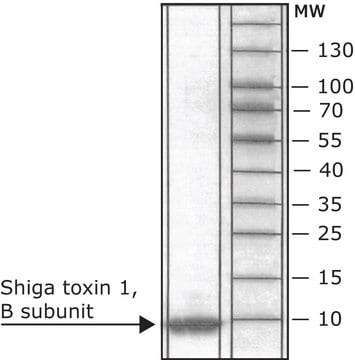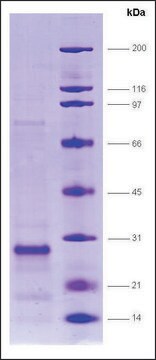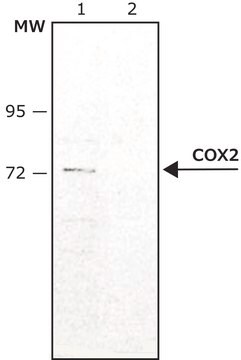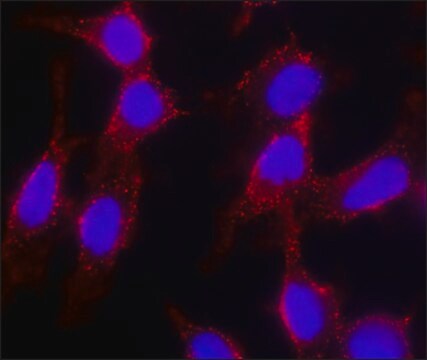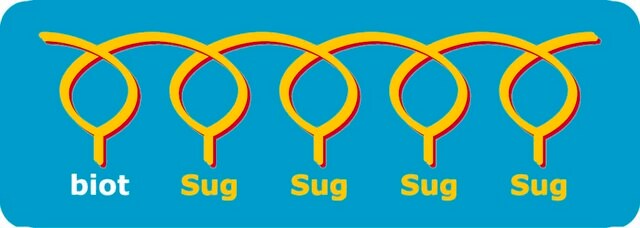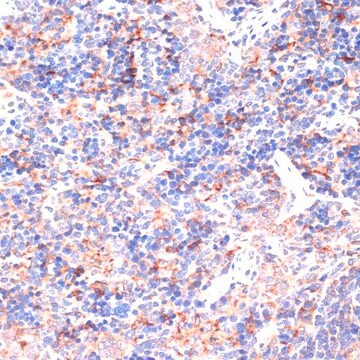SAB4200774
Anti-Shiga Toxin 1, B Subunit (STxB) antibody, Mouse monoclonal
clone 13C4, purified from hybridoma cell culture
别名:
Anti-SLT-1 B subunit, Anti-SLT-1b, Anti-Shiga-like toxin 1 subunit B, Anti-Verocytotoxin 1 subunit B, Anti-Verotoxin 1 subunit B, Anti-stxB
About This Item
推荐产品
生物源
mouse
品質等級
抗體表格
purified from hybridoma cell culture
抗體產品種類
primary antibodies
無性繁殖
13C4, monoclonal
描述
Research area: Microbiome
形狀
buffered aqueous solution
分子量
~7 kDa
物種活性
E. coli
濃度
~1.0 mg/mL
技術
flow cytometry: 2.5-5 μg/test using human RAMOS cells pretreated with recombinant Shiga toxin 1, B subunit
immunoblotting: 1-2 μg/mL using purified recombinant Shiga Toxin 1-B subunit produced in E. coli (using PVDF membrane)
immunoprecipitation (IP): suitable
同型
IgG1
UniProt登錄號
運輸包裝
dry ice
儲存溫度
−20°C
目標翻譯後修改
unmodified
一般說明
特異性
免疫原
應用
- immunoblotting
- flow cytometry
- immunoprecipitation
生化/生理作用
外觀
其他說明
未找到合适的产品?
试试我们的产品选型工具.
儲存類別代碼
10 - Combustible liquids
閃點(°F)
Not applicable
閃點(°C)
Not applicable
商品
An overview of human microbiome research, workflow challenges, sequencing, library production, data analysis, and available microbiome reagents to support your research.
我们的科学家团队拥有各种研究领域经验,包括生命科学、材料科学、化学合成、色谱、分析及许多其他领域.
联系技术服务部门
